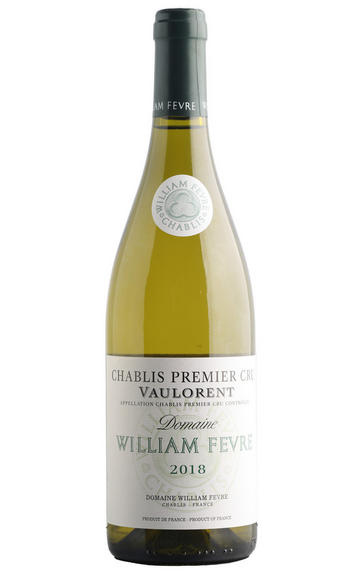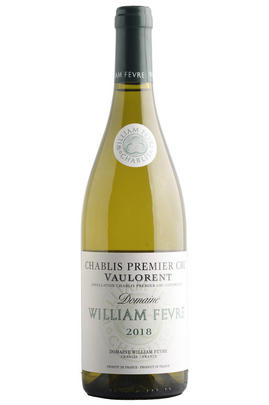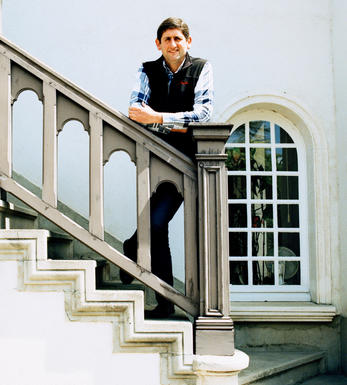
2018 Chablis, Vaulorent, 1er Cru, Domaine William Fèvre, Burgundy

Critics reviews
Pale lemon with a lime tint. Some gracious generous voluptuous qualities to the nose. The style of the year seems to work really well here and there is a little bacon fat and beneficial youthful bitterness. This is very complete and has an excellent grip. It has reached but not exceeded the limit of quality ripeness.
Jasper Morris MW, Inside Burgundy (May 2019)
A slightly riper nose blends notes of both white and yellow peach with those of acacia and mineral reduction. The sleek and refined medium-bodied flavors possess good power and punch while remaining focused and composed on the impressively long and well-balanced finale. This isn't quite as energetic, but it nonetheless offers much to like.
Drink 2025+
Burghound.com (Nov 2020)
The 2018 Chablis Vaulorent 1er Cru is clean and precise on the nose, and more classically styled than the Vaillons or Fourchaume, with fragrant jasmine, white peach and lemon zest unfurling from the glass. The palate is clean and precise, the acidity beautifully judged, and there is wonderful delineation from start to finish. Linear in style, it does not fan out on the finish, but maintains a fine attack and leaves a lemongrass note tingling on the tongue. Excellent.
Drink 2022 - 2036
Neal Martin, vinous.com (Sep 2020)
The 2018 Chablis Vaulorent 1er Cru takes all the signatures of this small site and amps them up to the next level. Lemon confit, almond, dried fruit and floral notes lift from an intense, vertical wine endowed with real palate presence and depth. Seamless, ample and creamy, the Vaulorent is simply superb. Tasted next to the Fourchaume, the Vaulorent is a bigger and more dramatic wine.
Antonio Galloni, vinous.com (Jan 2020)
As usual, the 2018 Chablis 1er Cru Vaulorent is one of the finest premiers crus in the cellar, delivering an incipiently complex bouquet of fresh peach, crisp green orchard fruit, dried white flowers, smoke and oyster shell. Medium to full-bodied, satiny and complete, it's layered and multidimensional, with fine depth at the core, racy acids and a long, penetrating finish.
Drink 2023 - 2040
William Kelley, Wine Advocate (Jul 2020)
Ripe, baked-apple notes suggest a generosity that carries through onto the palate. Not lacking acidity, this is more open and rounded than several of the Fèvre premiers crus. Long, nutty finish.
Drink 2023 - 2028
Tim Jackson MW, jancisrobinson.com (Jan 2020)
Ripe apples and pears with crushed-stone undertones on the nose and palate. Full-bodied, creamy and layered with a subtle, focused finish. Drink or hold.
James Suckling, jamessuckling.com (Nov 2020)
Sold at a higher price than the domaine's straight Fourchaume because it's 'more profound', according to Didier Séguier, this comes from a Premier Cru that often makes wines of Grand Cru quality. Subtly wooded, with mouthwatering salinity, this shows the dry extract and concentration that are features of the vintage complemented by creamy, pillowy lees.
Drink 2020 - 2028
Tim Atkin MW, Decanter.com (Jul 2019)
About this WINE

Domaine William Fevre, Chablis
William Fèvre is one of Chablis’ greatest wine domaines, developed by the eponymous William Fèvre between 1957 and his retirement in 1998 when he sold to the Champagne House Joseph Henriot. William Fèvre began with just 7 hectares and had soon increased this to 48ha, planting widely in the best of the 1ers and grands crus where the vineyards had fallen by the wayside. However the Fèvre penchant for new oak was not to everybody’s taste.
Since the Henriot purchase the wines are made by the talented Didier Séguier who had previously been with the Bouchard team in Beaune. The domaine wines include 12 hectares of premier cru vineyards and no less than 16 hectares of grand crus.The whole crop of their domaine wines, straight Chablis included, is harvested by hand, the grands crus in small ‘cagettes’, with a sorting table back at the winery to ensure the quality of the raw material.
The 1er cru wines are vinified in 40-50% oak, the grands crus receiving 70-80%, but without using new wood – instead the domaine receives a plentiful supply of one year old barrels from Maison Bouchard, and the average age of wood in the cellars is 5 years old. The barrel and vat components are blended together after four to six months, for bottling before the end of the year.
In 1991 he joined forces with the Chilean producer Victor Pino and Vina William Fèvre was established in the heart of the Maipo Valley just outside Santiago.

Chablis
Chablis lies further north than the rest of Burgundy, located about halfway between Beaune and Paris; it’s actually not all that far from Champagne. The wines here – exclusively whites from Chardonnay – differ in style from other white Burgundies: they tend towards steeliness and flintiness.
The Chablis region is an island of vines lying amid the forests and pastures of the Yonne département. In the heart of Chablis, the soils are marl (clay-limestone) of a particular kind – Kimmeridgian – containing traces of marine fossils. For many, the classic aroma and flavour profile of Chablis is built around seashell and an iodine, marine character imparted by the soil.
As elsewhere in Burgundy, there’s a hierarchy in Chablis. Grand Cru represents the top tier, although it accounts for just one per cent of overall Chablis production. The Grand Cru vineyards rise above the eponymous town in an impressive sweep, sloping south. These are sunny sites, ranging in elevation from 100 to 250 metres above sea level. The wines are deep and powerful, benefitting hugely from bottle age after release. The best examples can age for up to 20 years. Over time, their colour evolves from greenish gold to a light yellow, and they develop real aromatic complexity.
Unlike the other tiers, it’s not uncommon for Grand Cru Chablis to see new oak. As a result, its flavour profile is perhaps more comparable to the Côte d’Or than the rest of Chablis. For something more classically “Chablis”, there’s the Premiers Crus. Style and quality can vary, depending on the climat and the producer. Whether floral or more mineral, the best examples are seriously impressive and represent the hallmark style of the region – they can also offer real value for money. These are structured wines with the capacity to age for 10 to 15 years.
The next tier – accounting for most of the region’s output – is labelled simply as “Chablis”. These are steely, clean and lean whites with aromas of green apples and lemon, intended for early drinking. As ever in Burgundy, there are exceptions: well-made examples by top growers from vineyards abutting the Premiers Crus can be age-worthy.
Finally, there’s Petit Chablis: everyday wines, generally from vineyards planted on higher slopes. Petit Chablis accounts for around one-fifth of all Chablis produced. These wines typically come from Portlandian limestone, known to produce a fruitier, simpler wine than Chablis.

Chardonnay
Chardonnay is often seen as the king of white wine grapes and one of the most widely planted in the world It is suited to a wide variety of soils, though it excels in soils with a high limestone content as found in Champagne, Chablis, and the Côte D`Or.
Burgundy is Chardonnay's spiritual home and the best White Burgundies are dry, rich, honeyed wines with marvellous poise, elegance and balance. They are unquestionably the finest dry white wines in the world. Chardonnay plays a crucial role in the Champagne blend, providing structure and finesse, and is the sole grape in Blanc de Blancs.
It is quantitatively important in California and Australia, is widely planted in Chile and South Africa, and is the second most widely planted grape in New Zealand. In warm climates Chardonnay has a tendency to develop very high sugar levels during the final stages of ripening and this can occur at the expense of acidity. Late picking is a common problem and can result in blowsy and flabby wines that lack structure and definition.
Recently in the New World, we have seen a move towards more elegant, better- balanced and less oak-driven Chardonnays, and this is to be welcomed.


Buying options
Add to wishlist
Description
As the only Premier Cru on the Grand Cru hill, this wine is treated by Fèvre as an honorary Grand Cru, and the quality is certainly of that level. The nose is rich and spicy, with smoke and jasmine notes. The palate offers rich, ripe fruit and a silky texture with exotic oils and a warming tension underneath. It’s very persistent with a tense finish. Drink 2022-2030.
wine at a glance
Delivery and quality guarantee